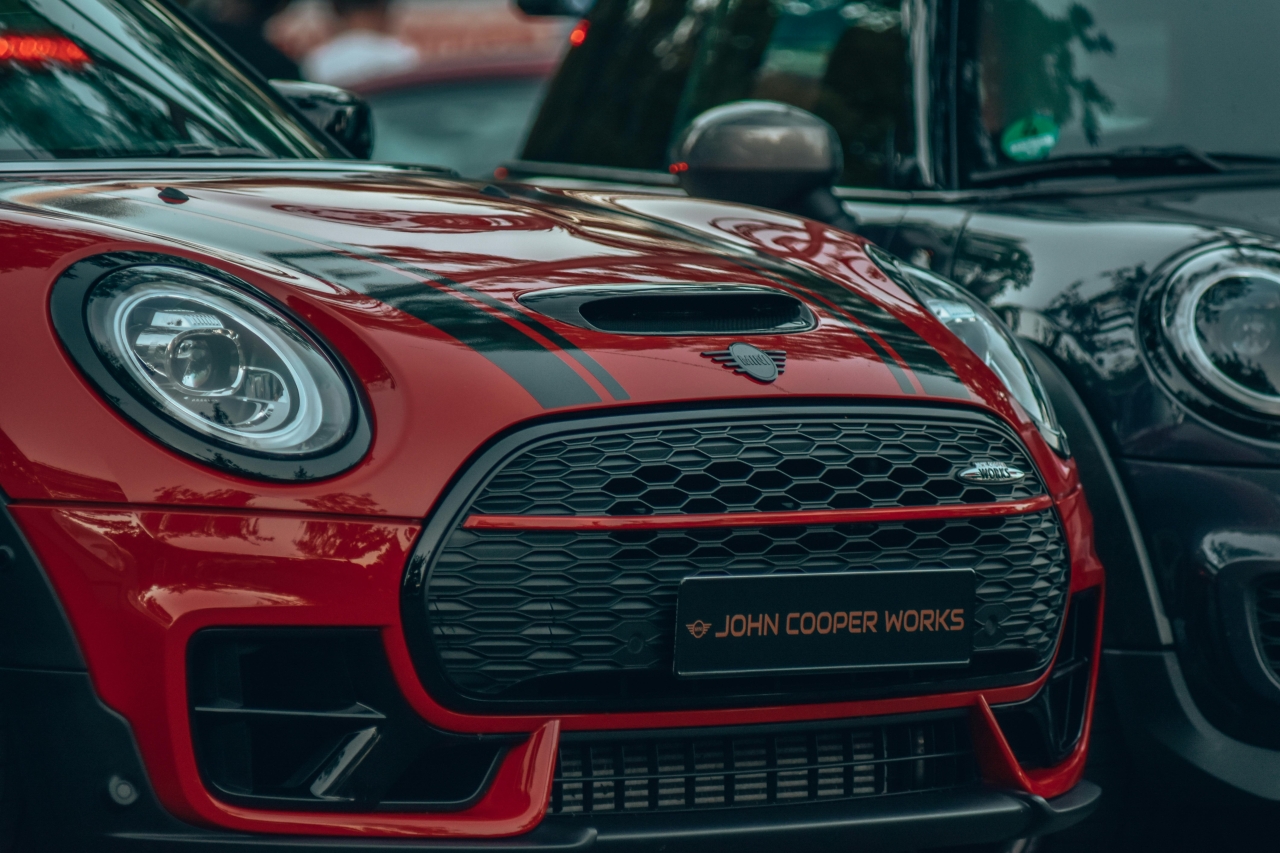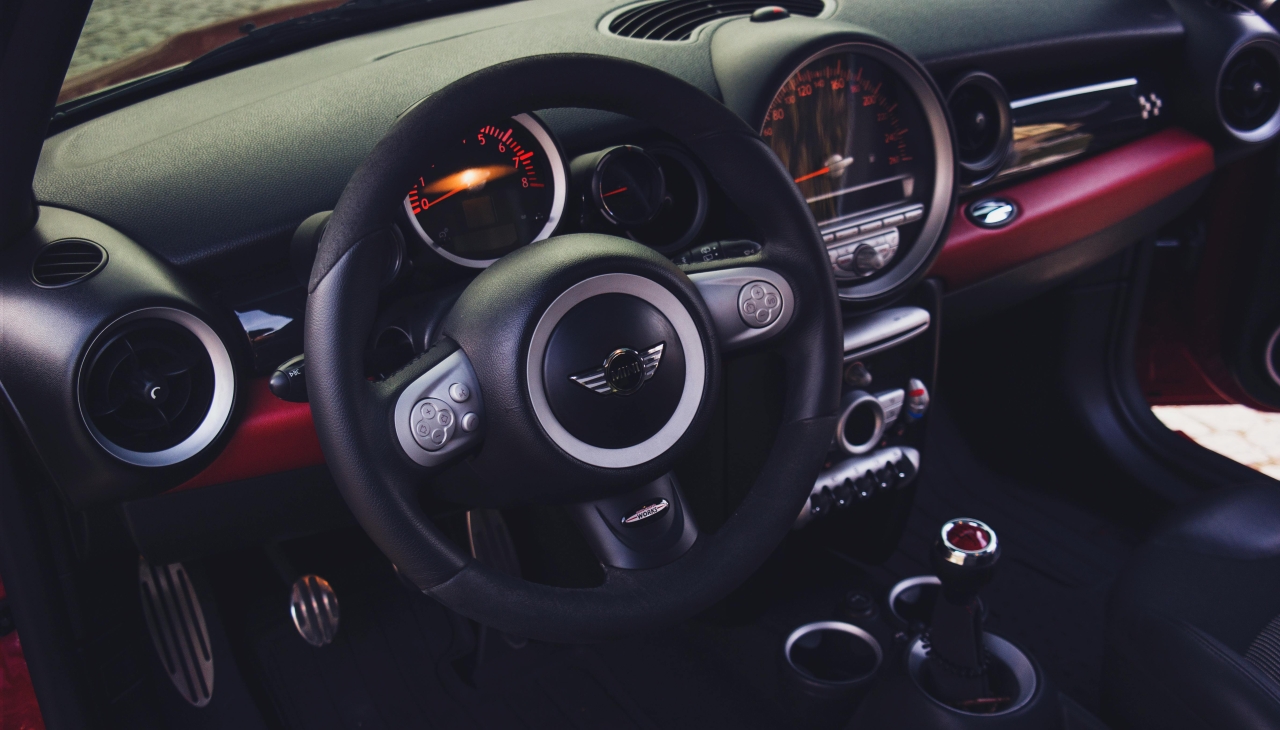The Mini's sound is half the brand's character, and the exhaust defines it most. The John Cooper Works Pro (JCW Pro) kit delivers a distinctive tone and maintains road legality. It's a cat-back, so it works from the catalytic converter to the exhaust tips, without touching any emissions components. Properly tuned setups can deliver up to 7 hp and faster throttle response. A used kit comes with factory mounts, so installation is quick and predictable. This guide addresses selection, compatibility, installation, and daily operation, with references to other sports systems.
Sound Context: What the JCW Pro Cat-Back Changes
The distinctive sound is the result of the muffler geometry, pipe diameters, and optional flap. The JCW Pro operates "downstream of the catalytic converter," so it doesn't interfere with sensors or emissions standards. Therefore, it's considered a legal solution for everyday driving. The electrically operated flap can open the bypass under load and close it in comfort modes. This ensures a quiet ride while accelerating, while a sporty note is audible. The cat-back modifies the sound and flow without affecting emissions components, combining pleasure with refinement. 
Choosing a Layout: Selection Criteria and Priorities
The choice begins with the vehicle's platform. Different generations of Mini They have different pipe routing and mounting points. The next consideration is the diameter and type of muffler chambers, as these determine the tone and backpressure. Versions with a flap require a control and wiring harness compatible with the vehicle. It's also worth considering driving style: daily commute or frequent out-of-town trips.
Platform Compatibility: Numbers, Engines, Years
There are two popular families in the Mini range. The older R-series (e.g. the Mini Cooper S R56 engine ) differ in mounting and damping from the newer F-series. Newer cars often use a tailgate and have a different rear bumper design. In petrol engines, the impact of a cat-back on subjective acceleration can be more pronounced. In diesel engines, it's important that the change "after the catalytic converter" doesn't interfere with the operation of the aftertreatment systems.
System Installation: Steps and Risks
The cat-back installation begins with unscrewing the connector behind the catalytic converter. Next, the rubber hangers are removed, the pipe sections are swapped, and the ends are adjusted. Versions with a flap require the control unit to be connected and a short functional test performed. The workshop ensures new clamps, proper tightening torque, and no stress on the hangers. For systems with an electrical harness, it's best to have a service technician perform the installation.
Parameters and effects
Lower backpressure improves mid-range revving. The sound is fuller, but thanks to the flap, it's not tiring during steady driving. Manufacturer configurations have claimed gains of up to approximately +7 hp, especially when the system is paired with the appropriate intake and software. In everyday use, refined sound is more important than sheer volume. That's why the JCW Pro goes to drivers who value balance.
Comparisons and alternatives
There are three alternatives. A rear muffler mainly changes the tone, but rarely noticeably improves flow. A full cat-back, like the JCW Pro, combines sound with noticeably less resistance. Track solutions ( Mini manifold, Mini Cooper manifolds, ultra-low resistance downpipe) are intended for off-road use. For comparison, the Mercedes W211 sports exhaust " is sometimes built with a similar philosophy of "legal sound". So, for public roads, the best compromise is a cat-back - it has sound, breath and formal order.
Mini engine and exhaust
The exhaust and the engine are interconnected. Lower flow resistance helps maintain stable exhaust gas temperatures and consistent performance. In the petrol variants ( Mini Cooper S engine, Mini Cooper engines ) the effect is felt most strongly during dynamic driving. In diesel engines, maintaining the proper operation of the emissions systems is a priority, so the cat-back does not affect the sensor positions. In summary: a well-designed exhaust supports the engine's "breathing" and does not disturb the logic of the factory systems.

Emissions and legality: catalytic converters, EGR, regulations
The cat-back leaves the Mini catalytic converter, sensors, and their locations unchanged. Therefore, it does not affect the components responsible for exhaust gas control. The exhaust gas recirculation system ( EGR valve) (Mini EGR) works as designed at the factory. This distinguishes legal mods from track-oriented solutions, where emissions components are removed. The driver gets sound and peace of mind, and the car passes inspections. Importantly, legality stems from the principle of "nothing changes after the catalytic converter."
Compatibility Statement
Below is a shortcut that will help you talk to an automotive shop advisor and select auto parts. It's worth emphasizing that the initial map facilitates the conversation, but the final selection is always confirmed by the generation and equipment.
| Platform | Example units | System type | Emission - what remains | Selection tip |
|---|---|---|---|---|
| R-series (e.g. R56) | N14/N18 petrol | cat-back dedicated to R | catalytic converters, probes unchanged | pipe geometry other than F |
| F-series (e.g. F56) | B48/B46 gasoline | JCW Pro cat-back | emission elements unchanged | electrically operated flap |
| Diesels (Mini D) | different | cat-back to version | EGR and particle filter unchanged | priority: stable flow |
| Comparatively: W211 | V6/V8 | cat-back for W211 | catalytic converters and sensors remain unchanged | similar "legal sound" philosophy |
Errors and Pitfalls: List with Explanation
- Too large diameters "because it will be better". Too low resistance spoils the tone and can worsen the low end.
- Installing without new clamps. Leaks change the tone and generate resonances.
- Improperly positioned ends. They touch the bumper or transfer vibrations to the body.
- Ignoring the flap beam. Incompatible controls include missing modes or errors.
- Expecting miracles without tuning. +7 HP appears in a "tuned" set.
FAQ: Frequently asked questions by drivers
| Question | Answer |
|---|---|
| What is a cat back? | This is the exhaust section from the catalytic converter outlet to the exhaust tips. It does not interfere with catalytic converters or sensors. |
| Is the JCW Pro exhaust legal? | Yes, because it leaves the emissions components in their factory positions. It changes the sound and flow "downstream of the catalytic converter." |
| Where does "+7 HP" come from? | From lower backpressure and better coordination with the intake and software. In everyday use, the gains are felt in the medium range. |
| Do I need changes to the engine control unit? | Not always. The sound appears immediately, and the full performance comes after the set has been tuned. |
| How does it work in a diesel? | Cat-back does not affect the EGR or particulate filter. The priority is stable flow and error-free operation. |
| What is the difference between the R-series and the F-series in terms of exhaust? | Tube geometry, mounting points, and flap control. Therefore, a platform-specific system is crucial. |
| Is it worth comparing with solutions from other brands? | Yes, for example, the Mercedes W211 sports exhaust shows a similar compromise: sound and legality without changing emissions. |
| Finally, it's worth taking a practical approach: choosing a dedicated cat-back for the platform and hatch delivers sound, a light breath, and a refined feel. Global Parts consultants will help you select a compatible kit and coordinate it with your intake and software, ensuring your Mini sounds great every day and delivers enjoyment when it matters most. |